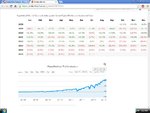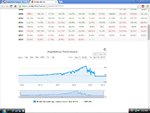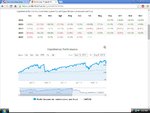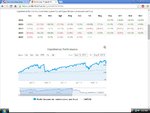tomtaring - hey that's not bad.
Positions I don't want - they hit my stops. I make sure my stops on these trades are moved to where they will almost definitely be hit if TA tells me the situation has changed since entry and price direction is now unlikely to go / continue my way. But leaving some wiggle room is good, just in case either the in-trade TA was too pessimistic or in case external events unexpectedly take me back into the money. Either way, I don't ever scale out.
Do realise I'm not intra-day trading. So do not think I'm going to go off to sleep or off on hols without placing stops.
Positions I don't want - they hit my stops. I make sure my stops on these trades are moved to where they will almost definitely be hit if TA tells me the situation has changed since entry and price direction is now unlikely to go / continue my way. But leaving some wiggle room is good, just in case either the in-trade TA was too pessimistic or in case external events unexpectedly take me back into the money. Either way, I don't ever scale out.
Do realise I'm not intra-day trading. So do not think I'm going to go off to sleep or off on hols without placing stops.






